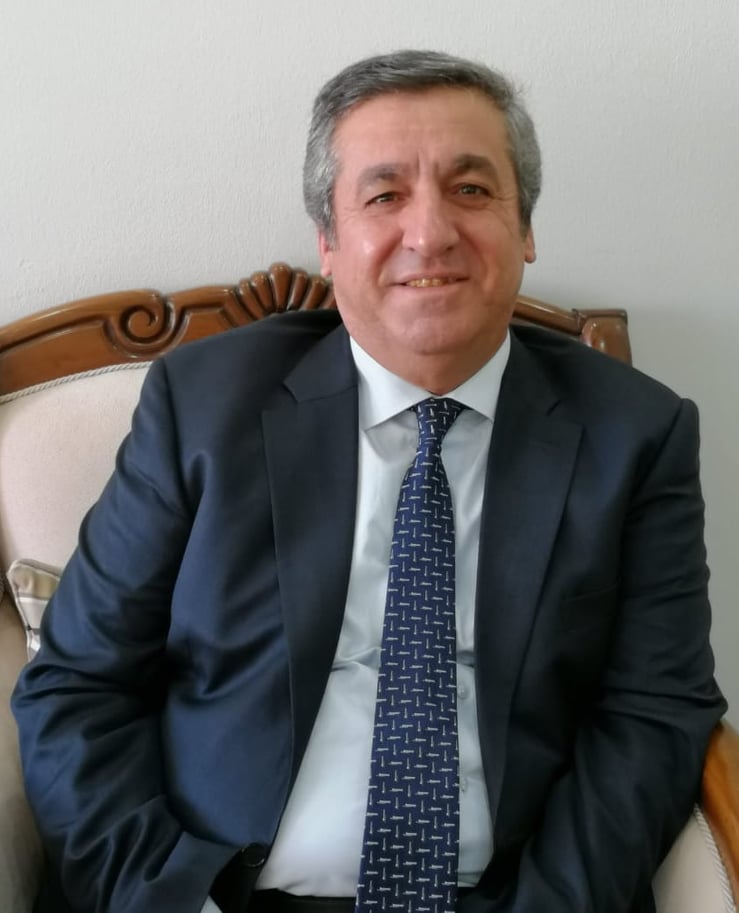
The Visit to Mar Sahduna
According to historical records, Syriac culture has an ancient heritage in the Kardu (Cudi) region. The remnants of this past include Assyrian reliefs from pre-Christian eras and post-Christian villages, churches, and monasteries scattered across this mountain range. At the foothills of Mount Kardu (Cudi), nestled against fortress-like cliffs, lies the village of Hassana -another relic of this enduring history.
Like other areas in the region, the churches and monasteries of Mount Kardu (Cudi) played a central role in the development of Syriac culture and language. Over the centuries, significant literary works were produced here, resulting in numerous manuscripts and texts. A notable example is the Syriac Bible copied in 1808 at the Hassana-St. Moses Church, which stands as a critical reference point for the advanced and rich Syriac literary tradition of the time.
After a painful displacement in 1993, the villagers of Hassana spent decades mourning their lost homeland. Forced to build new lives far from Bethnahrin/Mesopotamia, they carried the longing for their ancestral lands with them to Europe.
On the slopes opposite Hassana, near the peaks once used as a summer retreat by Assyrian King Sennacherib, lies a prayer house dedicated to Saint Mar Sahduna. Despite countless challenges, this humble sanctuary has endured to the present day.
When Hassana village was revived in 2014, Markos Dirlik (Beth Muro) and the villagers collaborated to restore and rebuild Mar Sahduna’s prayer house. This restoration was no arbitrary decision. Rather, it symbolised a spiritual step toward reclaiming the village’s identity and history. Reviving a structure reduced to rubble reflects the villagers’ determination to honour their past and preserve their cultural heritage, even as they struggle to sustain life on these mystical slopes.
Today, Mar Sahduna stands as a poignant sentinel, its presence almost greeting the souls of those who return to the village from afar. At night, its glowing light resembles a lighthouse piercing dark seas -a beacon of hope winking at those seeking tranquillity. The shimmering rays seem to soothe the heart, scattering shadows and whispering promises of a brighter, more peaceful tomorrow.
The name "Sahduna" derives from Syriac, meaning "martyr." Mar Sahduna was a prominent monastic writer and scholar of the early 7th century. Born in Halmon (Beth Nuhadra, near present-day Duhok), he was drawn to monastic life under the influence of his mother, Şirin, a devout woman. He lived as a monk at Beth Abe Monastery before being appointed bishop of Beth Garmay between 635–640 CE [1].
Mar Sahduna’s most notable work, the Book of Perfection (ܟܬܒܐ ܕܫܘܡܠܝ ܕܘܒܪ̈ܐ), survives in a manuscript copied in Urfa in 837 CE. Though incomplete, the first extant section outlines doctrinal foundations of Christian ethics and defines ideals of spiritual perfection for both communal and solitary monastic life. The second part -now largely lost- reportedly contained detailed discussions on virtues. A striking feature of the text is its heavy reliance on Biblical citations, with almost no references to non-scriptural sources. His other known works include five letters and a collection titled Sayings on Wisdom.
As such, Mar Sahduna made significant intellectual contributions during the cultural turbulence of the 7th century, promoting social harmony. He played a pivotal role in the moral and cultural evolution of Syriac Christianity, enriching the Syriac language and ensuring its enduring legacy.
Mar Sahduna, through his works addressing moral issues, shed light on the religious and philosophical conflicts of his time and created a unifying effect. His works, written in Syriac, hold significant linguistic and literary value. These works have become not only an essential part of Syriac Christian thought but also a crucial component of world literature, maintaining their place as indispensable reference sources.
In the context of returning to one's essence, Mar Sahduna emphasizes the necessity of looking into the mirror of the self with a logic of inner purification and self-criticism. His following thought carries striking meanings about the process of self-improvement. He calls for self-awareness through internal judgment, stressing that instead of judging the external world, one should question the darkness, secrets, and thoughts within oneself. Rather than focusing on the faults and flaws in external reality, one should turn inward to illuminate the darkness within and remember that this process must be lived solely between oneself and God. Reminding us of the importance of spiritual purification, inner enlightenment, and self-judgment, Mar Sahduna says:
«.... ܫܬܽܘܿܩ ܡܳܕܶܝܢ ܡܼܶܢ ܕܺܝܼܢܳܐ ܕܰܠܒܰܪ ܡܶܢܳܟ. ܘܥܽܘܼܠ ܠܳܟ ܒܕܺܝܼܢܳܐ ܥܰܡ ܥܰܘܠܳܐ ܕܰܒܓܰܘܳܟ. ܫܰܪܳܐ ܠܰܡܥܰܩܳܒܽܘܼ ܟܰܣ̈ܝܳܬܳܐ ܕܰܒܠܶܒܰܟ. ܒܨܺܝܼ ܣܽܘܼܥܪ̈ܳܢܶܐ ܕܰܠܓܰܘ. ܕܽܘܼܢ ܚܽܘܼ̈ܫܳܒܶܐ ܕܬܰܡܳܢ. ܐܰܢܗܰܪ ܠܳܟ ܫܪܳܓܳܐ ܕܢܽܘܼܗܪܳܐ. ܕܬܶܚܙܶܐ ܟܰܣ̈ܝܳܬܶܗ ܕܚܶܫܽܘܼܟܳܐ ܕܒܳܟ. ܐܰܦܶܩ ܛܡܺܝܼܪ̈ܳܬܶܗ. ܘܦܰܪܣܳܐ ܣܬܺܝܼܪ̈ܬܶܗ ܒܶܝܬ ܠܳܟ ܘܠܰܐܠܳܗܳܐ. ܩܕܳܡ ܕܢܶܡܛܶܐ ܝܰܘܡܳܐ ܕܰܩܕܳܡ ܟܽܠܢܳܫ ܒܢܽܘܼܗܪܳܐ ܕܰܠܥܶܠ ܢܶܬܦܰܪ̈ܣܝܳܢ...»
"…Then be silent; do not judge what is outside of you. Focus on judging the cruelty within you. Begin to search the secrets hidden in your heart. Question your inner actions. Judge the thoughts that reside there. Illuminate your inner world with the torch of light so that you may see the darkness within you. Bring to light whatever is hidden in that darkness within you. Before the day comes when it will be revealed before everyone by the light above, uncover the secrets of that darkness solely between yourself and the Lord."
Yusuf Beğtaş
[1] Those who want to research Mar Sahduna can refer to the following sources:
You can also send us an email to karyohliso@gmail.com
Leave a Comment